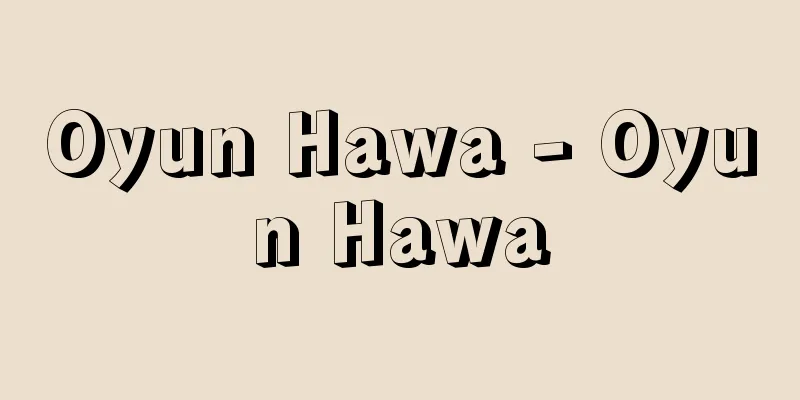Keichu

|
A classical scholar, poet, and monk in the early Edo period. He was also known as Kuushin. He was from the Shimokawa family of Omi Province (Shiga Prefecture). His grandfather Motoyoshi was a senior retainer of Kato Kiyomasa, and his father Motosada served the Aoyama clan of Amagasaki. His mother was a retainer of Hosokawa Tadaoki, a member of the Hazama clan. He was born in Amagasaki as the third of eight children. He became a monk at the age of 11 and became a disciple of Kaijo at Imazato Myohoji Temple in Osaka. At the age of 13, he went to Mount Koya and studied under Toshitsuin Kaiken. At the age of 23, he became the head priest of Mandala-in Temple in Osaka, and at the age of 24, he attained the rank of Ajari. Around that time, he met Shimokawabe Choryu and began studying the classics. At around age 27 or 28, he left Mandala-in and nearly killed himself by hitting his head on a cliff in Muro, Yamato (Nara Prefecture). After passing through Koyasan, he lived with Tsujimori Yoshiyuki in Hisai, Izumi Province (Izumi City, Osaka Prefecture) from around age 30, and with Fuseya Shigekata (?-1693) in Mancho (same city) from around age 35, during which time he thoroughly read Japanese and Chinese books. At age 40, he became the chief priest of Myohoji Temple, and retired to Takatsu Enjuan, which he founded, from around age 51 until his death at age 62, where he devoted himself to writing. He died on January 25, 14th year of the Genroku era. His posthumous works and grave are located at Enjuan. He was also commissioned by Tokugawa Mitsukuni to write commentaries on such classics as "Manyo Daishouki," "Kogansho," "Kokin Yozaisho," "Seigokudan," "Genchushu Shui," and "Hyakunin Isshu Kaikansho," as well as "Waji Shoransho." He established the foundations of historical kana usage, wrote research on utamakura (poetry pillow) such as "Shochi Tokaihen," research essays such as "Kawayashiro," "Enjuan Zakki," and "Keichu Zakko," and wrote many copies, excerpts, and inscriptions of classical works such as waka (poems) such as "Shinsen Manyoshu" and "Kokin Waka Rokujo," history such as "Rikkokushi," stories, and diaries. He established a highly advanced classical study based on empirical philological methods, and had a significant influence on later generations. His disciples included Noda Chushu (1648-1719), Imai Jikan (1657-1723), Kaihoku Jakuchu (1675-1752), and Ando Tameakira. He also composed realistic waka poems in the Shin Kokin style, and over 6,000 of his poems are collected in works such as "Keichu Waka Enposhu" and "Manginshu." [Tsutomu Hayashi June 20, 2017] "The Complete Works of Keichu, supervised by Ueda Mannen, 11 volumes (1926-1927, Asahi Shimbun)" ▽ "The Complete Works of Keichu, supervised by Hisamatsu Sen'ichi, 16 volumes (1973-1976, Iwanami Shoten)" ▽ "The Biography of Keichu" (included in The Collected Works of Hisamatsu Sen'ichi 12, 1969, Shibundo)" ▽ "Study of Keichu, by Tsukishima Yutaka, Hayashi Tsutomu, Ikeda Toshio, and Kubota Jun (1984, Iwanami Shoten)" [Reference items] | | |Volume 1, by Keichu, first manuscript, held at the National Diet Library "> "Manyoshu Daishouki" Source: Shogakukan Encyclopedia Nipponica About Encyclopedia Nipponica Information | Legend |
|
江戸前期の古典学者、歌人、僧侶(そうりょ)。空心(くうしん)とも号す。近江(おうみ)国(滋賀県)下川(しもがわ)家の出。祖父元宜(もとよし)は加藤清正の家老で、父元全(もとさだ)は尼崎(あまがさき)青山氏に仕えた。母は細川忠興(ほそかわただおき)の臣、間(はざま)氏。8子中第3子として尼崎で生まれた。11歳で出家、大坂今里妙法寺の丰定(かいじょう)の弟子となり、13歳、高野山(こうやさん)に上り東室院快賢(とうしついんかいけん)につき、23歳、大坂の曼陀羅院(まんだらいん)の住職となり、24歳、阿闍梨(あじゃり)位を得た。そのころ下河辺長流(しもこうべちょうりゅう)を知り古典研究を始めた。27、28歳ごろ曼陀羅院を去り、大和(やまと)(奈良県)室生(むろう)の岩壁に頭を打ち死を図ったのち、高野を経て、30歳ごろより和泉(いずみ)国久井(ひさい)(大阪府和泉市)の辻森吉行(つじもりよしゆき)、35歳ごろより万町(まんちょう)(同市)の伏屋重賢(ふせやしげかた)(?―1693)のもとに寄寓(きぐう)、和漢の書を読破した。40歳、妙法寺住職となり、創設した高津円珠庵(えんじゅあん)に51歳ごろから62歳の死まで隠棲(いんせい)、著述に専念した。元禄(げんろく)14年1月25日没。円珠庵に遺著、墓がある。 徳川光圀(とくがわみつくに)の依頼も受け、『万葉代匠記(まんようだいしょうき)』『厚顔抄(こうがんしょう)』『古今余材抄(こきんよざいしょう)』『勢語臆断(せいごおくだん)』『源註拾遺(げんちゅうしゅうい)』『百人一首改観抄(かいかんしょう)』など古典を注釈、『和字正濫鈔(わじしょうらんしょう)』などで歴史的仮名遣いの基礎を確立し、『勝地吐懐編(しょうちとかいへん)』など歌枕(うたまくら)研究、『河社(かわやしろ)』『円珠庵雑記』『契沖雑考』など研究随筆を著し、『新撰(しんせん)万葉集』『古今和歌六帖(ろくじょう)』など和歌、六国史(りっこくし)など歴史、物語、日記など古典の書写、抄出、書入類も多い。実証的な文献学的方法による格段と進んだ古典研究を確立し、後世への影響が著しい。門弟に野田忠粛(のだちゅうしゅく)(1648―1719)、今井似閑(いまいじかん)(1657―1723)、海北若冲(かいほくじゃくちゅう)(1675―1752)、安藤為章(あんどうためあきら)らがある。また新古今調で写実的な和歌を詠み、『契沖和歌延宝集(えんぽうしゅう)』『漫吟集(まんぎんしゅう)』などに6000首以上収められている。 [林 勉 2017年6月20日] 『上田万年監修『契沖全集』全11巻(1926~1927・朝日新聞社)』▽『久松潜一監修『契沖全集』全16巻(1973~1976・岩波書店)』▽『『契沖伝』(『久松潜一著作集12』所収・1969・至文堂)』▽『築島裕・林勉・池田利夫・久保田淳著『契沖研究』(1984・岩波書店)』 [参照項目] | | | |巻1 契沖著 初稿本写本国立国会図書館所蔵"> 『万葉代匠記』 出典 小学館 日本大百科全書(ニッポニカ)日本大百科全書(ニッポニカ)について 情報 | 凡例 |
<<: Accounting book - Accounting book
Recommend
Desert pavement
...the vertical cross section is parallel to the ...
Croûton (English spelling)
…(2) Thick soup potage lié: A soup made with boui...
Hereford
Hereford is an agricultural city in the west of He...
clinozoisite
...In the strict sense, it is a mineral with the ...
Homolytic cleavage
...There are two ways in which this bond can be c...
Knudsen, Jakob
Born: September 14, 1858, Ledin Died: January 21, ...
Change of country
This refers to the reassignment of feudal lords d...
Nippō Main Line - Nippō Main Line
The name of the Kyushu Railway Company's trac...
Auer, C.
…A type of pyrotechnic alloy invented in 1903 by ...
Cell organelles
A general term for structures inside cells that a...
Sinkhole
…Doline comes from the Serbian word dolina, which...
Discretionary discretion
→Legal discretion Source: Shogakukan Encyclopedia...
Altuin Khan
A chief of the Khutgoit tribe in northwestern Mong...
CCS (ocean) (English name) CCS
…Furthermore, the CCD is constant over a fairly w...
Castanet - Castanet (English spelling) castanet English
A idiophone that produces sound by striking woode...









